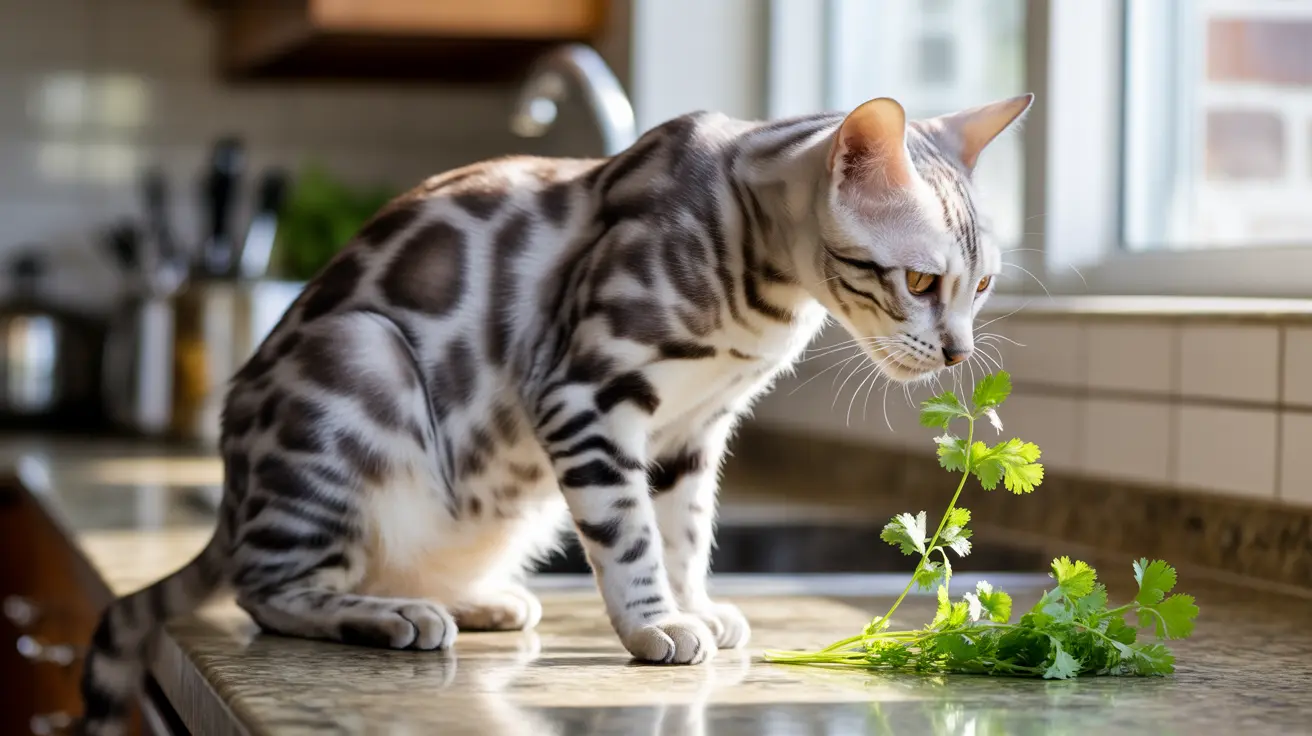If you're a cat owner who loves cooking with fresh herbs, you might have wondered whether sharing some cilantro with your feline friend is safe. As more pet parents become conscious about their cats' dietary choices, questions about herbs like cilantro frequently arise. Let's explore everything you need to know about cats and cilantro consumption.
While cats are obligate carnivores who primarily need meat-based proteins, certain herbs can be safe additions to their diet when offered appropriately. Cilantro, also known as coriander or Chinese parsley, falls into the category of non-toxic herbs for cats, according to the ASPCA.
Understanding Cilantro and Its Safety for Cats
Cilantro (Coriandrum sativum) is completely safe for cats to consume in moderation. All parts of the plant, including leaves, stems, and seeds, are non-toxic to felines. However, just because cilantro is safe doesn't mean it should become a regular part of your cat's diet.
The key to offering cilantro to cats lies in moderation. While the herb contains various nutrients like vitamins A, C, and K, cats' digestive systems aren't designed to process large amounts of plant material.
Potential Benefits of Cilantro for Cats
Although cats don't require cilantro for nutritional purposes, the herb does contain some beneficial compounds:
- Antioxidants that support overall health
- Dietary fiber that may aid digestion
- Essential vitamins and minerals
- Natural aromatic compounds that some cats find interesting
How to Safely Introduce Cilantro to Your Cat
When offering cilantro to your cat for the first time, follow these guidelines:
- Wash the herb thoroughly to remove any pesticides or contaminants
- Start with a tiny amount (1-2 small leaves)
- Monitor your cat for any adverse reactions
- Only offer fresh, organic cilantro when possible
- Never force your cat to eat it if they show no interest
Signs Your Cat Should Not Eat Cilantro
Watch for these warning signs that indicate cilantro might not agree with your cat:
- Vomiting or diarrhea
- Changes in appetite or behavior
- Excessive drooling
- Lethargy or unusual behavior
- Allergic reactions like itching or swelling
Frequently Asked Questions
Is cilantro safe for cats to eat, and which parts of the plant can they consume?
Yes, cilantro is safe for cats to eat, and all parts of the plant (leaves, stems, and seeds) are non-toxic. However, only offer small amounts as an occasional treat.
What are the potential health benefits and risks of feeding cilantro to my cat?
Benefits include minor nutritional contributions from vitamins and antioxidants. Risks primarily involve potential digestive upset if consumed in large quantities or sensitivity in some cats.
How should I introduce cilantro to my cat's diet safely and in what amounts?
Start with a single small leaf, thoroughly washed, and monitor your cat's reaction. Only offer it occasionally as a treat, never as a dietary staple.
Why don't cats typically like the taste or smell of cilantro?
Cats are obligate carnivores with taste preferences geared toward meat. Many cats are indifferent to herbs like cilantro due to their natural dietary instincts.
Which herbs are safe for cats to eat, and which ones should I avoid?
Safe herbs include cilantro, catnip, basil, and thyme. Avoid toxic herbs like garlic, chives, onions, and certain varieties of chamomile.
While cilantro can be a safe addition to your cat's occasional treats, remember that it should never replace their regular, meat-based diet. Always consult with your veterinarian before making any significant changes to your cat's diet, especially if they have existing health conditions or are taking medications.






